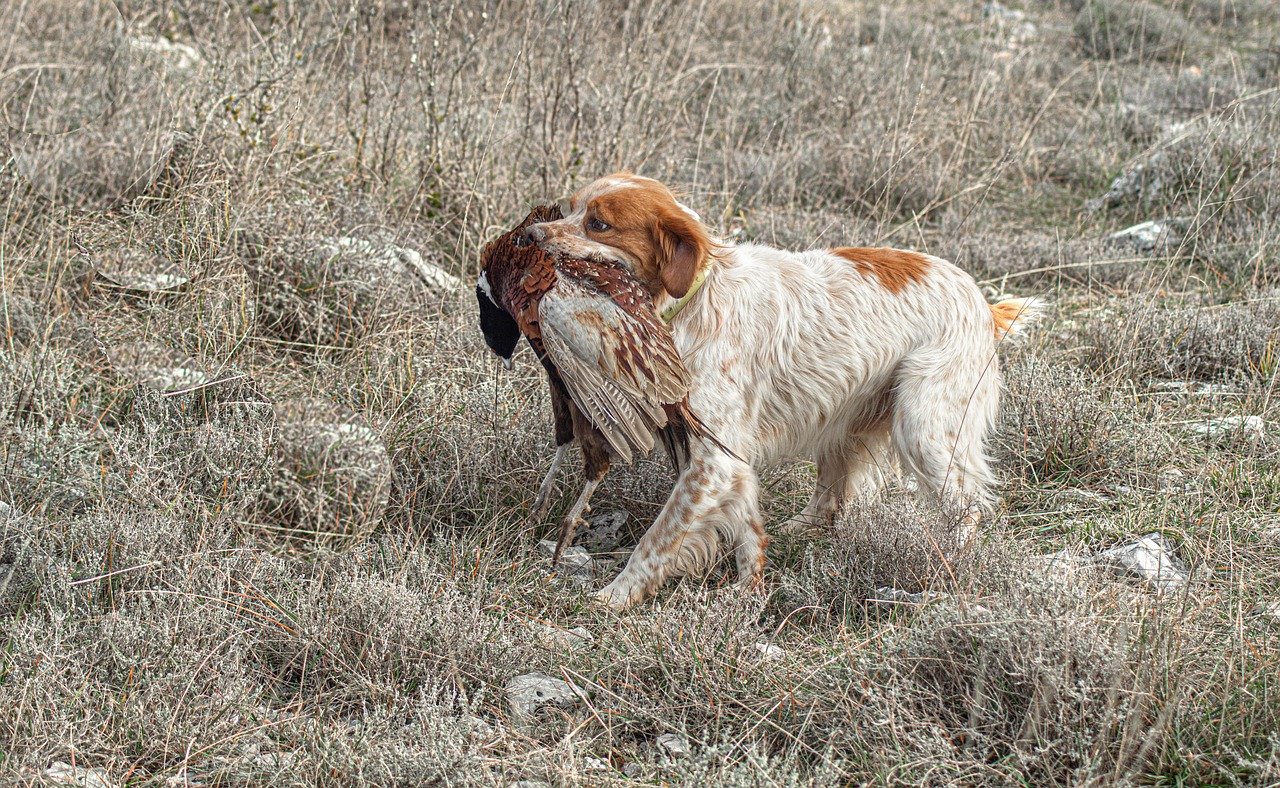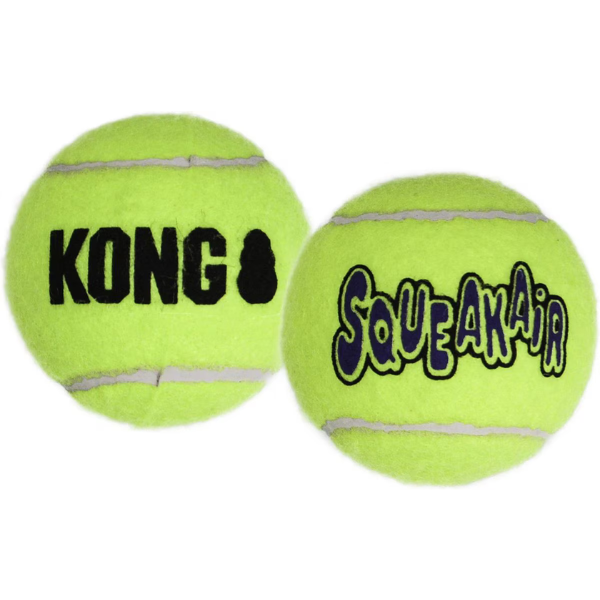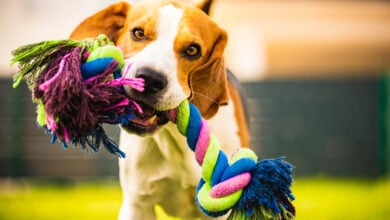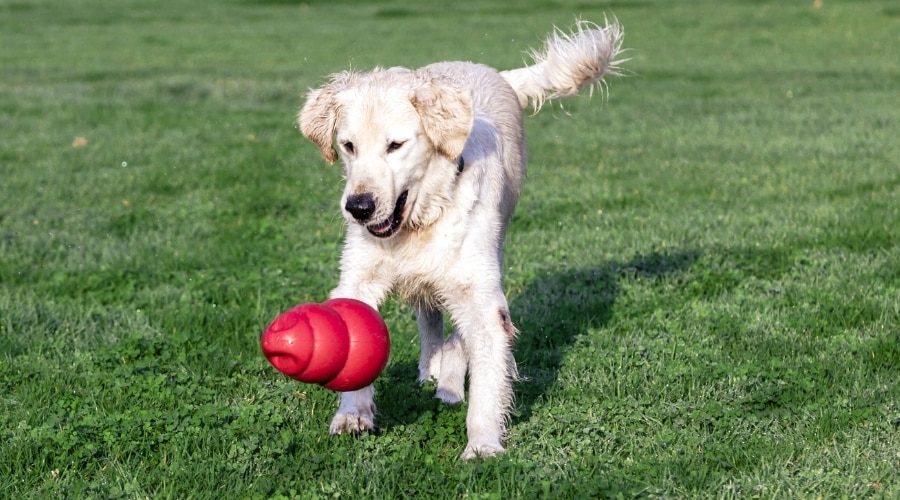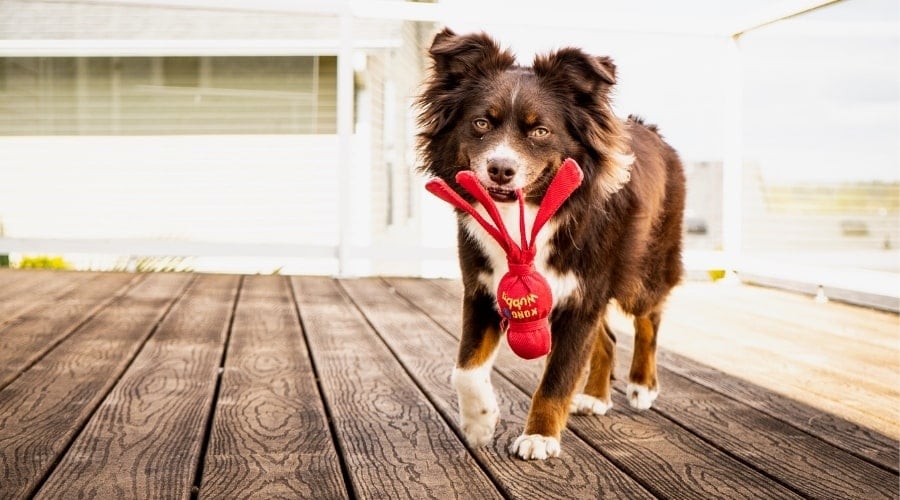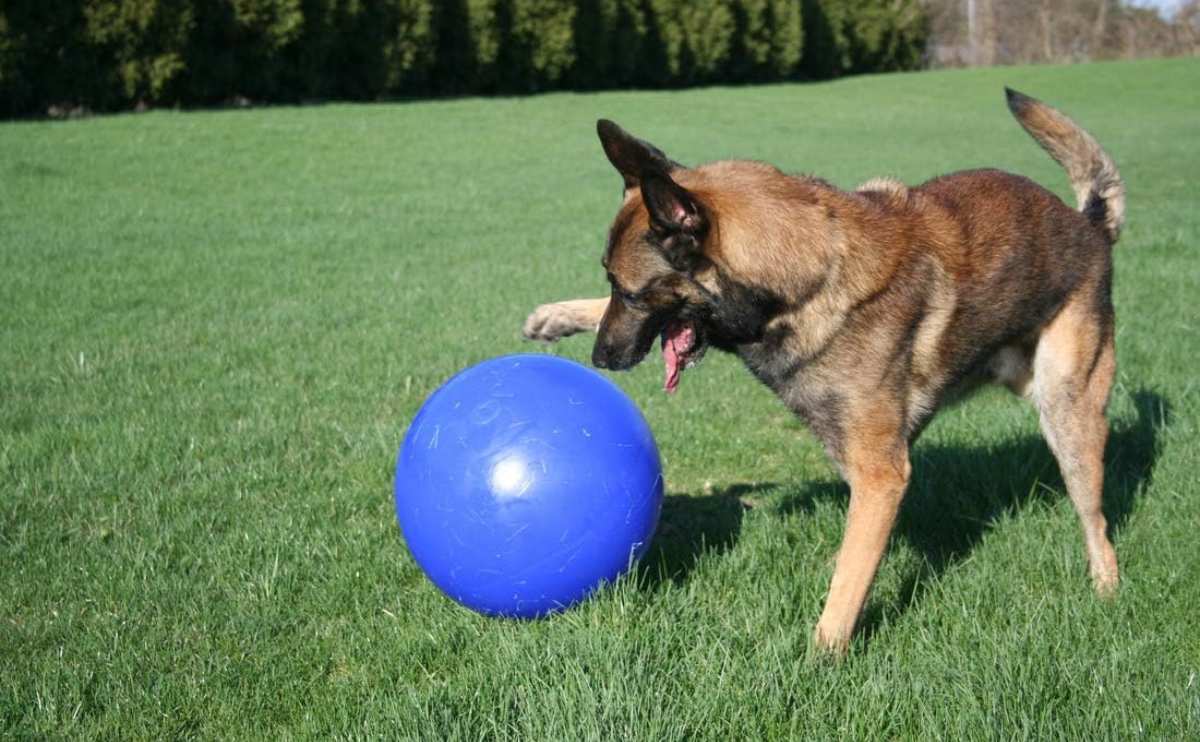Why Do Dogs Love Tennis Balls? Spoiler: The Secret’s In The Bounce
When you purchase through links on our site, we may earn a commission. Here’s how it works.
At 13, my dog Tiny, a little Cocker Spaniel mix, isn’t exactly full of zoomies these days. But when I break out a tennis ball, he goes into instant puppy play mode, even though his aging body can’t keep up like it used to. Most other toys? Not so much. It’s the tennis ball.
Table of Contents
Sound familiar? Maybe your dog also becomes a blur of excitement the moment a tennis ball hits the ground. So, what is it about this fuzzy yellow ball that drives dogs wild?
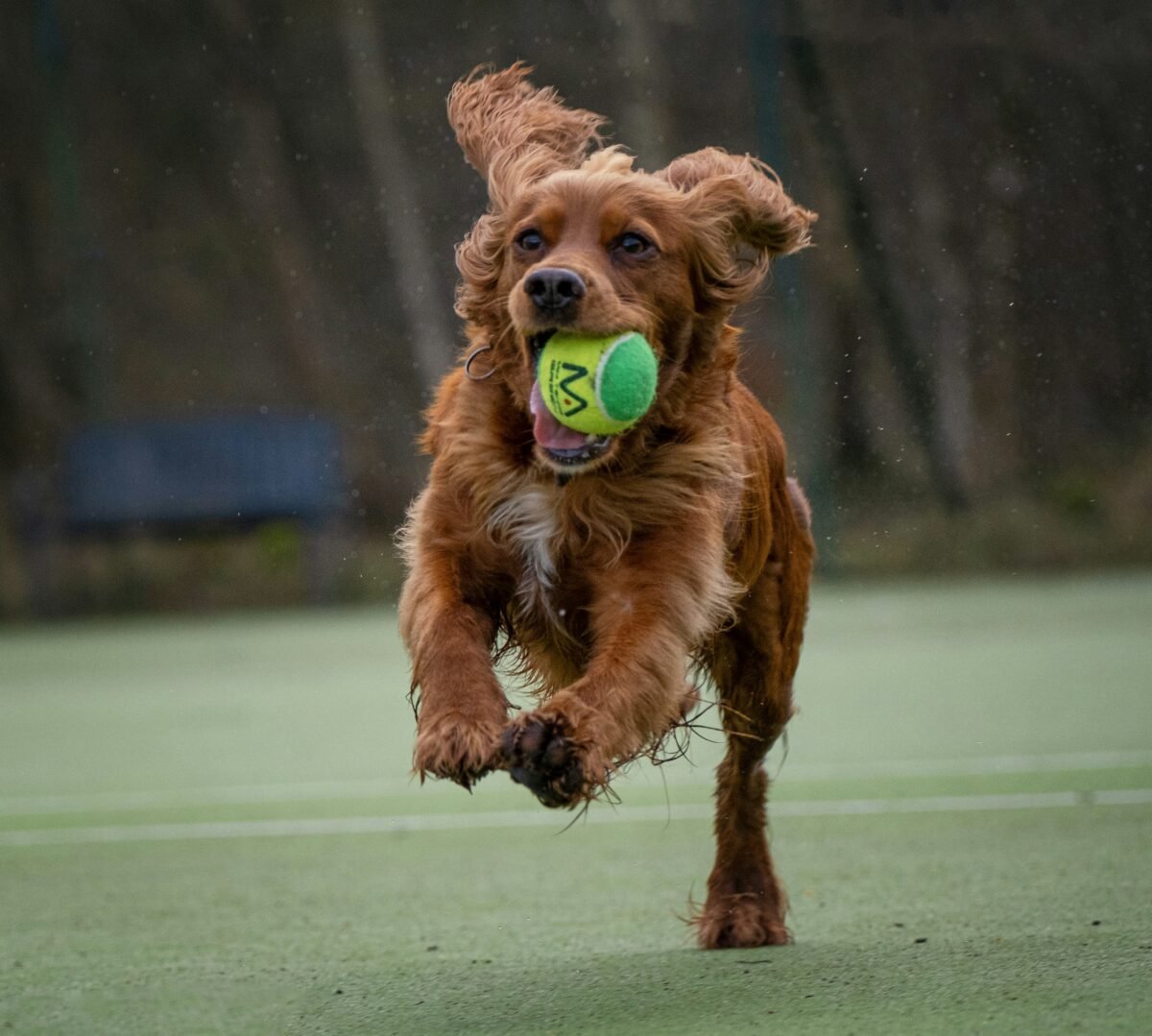
Why Do Dogs Love Tennis Balls? 3 Top Reasons
It’s no secret: dogs and tennis balls are a match made in slobber heaven.
For some dogs (like mine), tennis balls aren’t just a toy; they’re the toy. A treasure to bury, carry, and present proudly to owners and guests to entice playtime. Out of all the toys out there, why this one?
1. Prey Drive: The Dog Instinct Runs Deep
Chasing small, fast-moving objects taps into many dogs’ instincts, especially in hunting and herding breeds. Tennis balls mimic the size and texture of small animals, triggering a dog’s instinct to chase and capture them. The size, bounce, and unpredictability of a tennis ball make it the perfect target.
2. Texture & Odor
The fuzzy texture of a tennis ball feels good in their mouths, and tennis balls trap odors well, making them fun to sniff and chew.
3. Unpredictable Movement
The erratic bounce of tennis balls excites dogs, making them eager to chase after them. After all, they’re more of a challenge than a regular old ball.
Why Do Dogs Like Chasing Balls?
It’s coded in their DNA. Many dogs are natural chasers. When something fast and unpredictable rolls by, that instinct kicks in like turbo mode. But our pups have other reasons as well.
Chasing a ball gives our furry friends:
- A burst of exercise
- A challenge to focus on
- A sense of accomplishment
- A way to bond with their favorite human
“You Threw It. I Must Return It.”
Dogs don’t just love the ball; they love the game. Fetch taps into their need for connection. That “bring it back” loop is their version of small talk. It’s repetitive, for sure, but deeply bonding for them.
- Toss = invitation
- Retrieve = success
- Return = approval
- Repeat = happiness overload
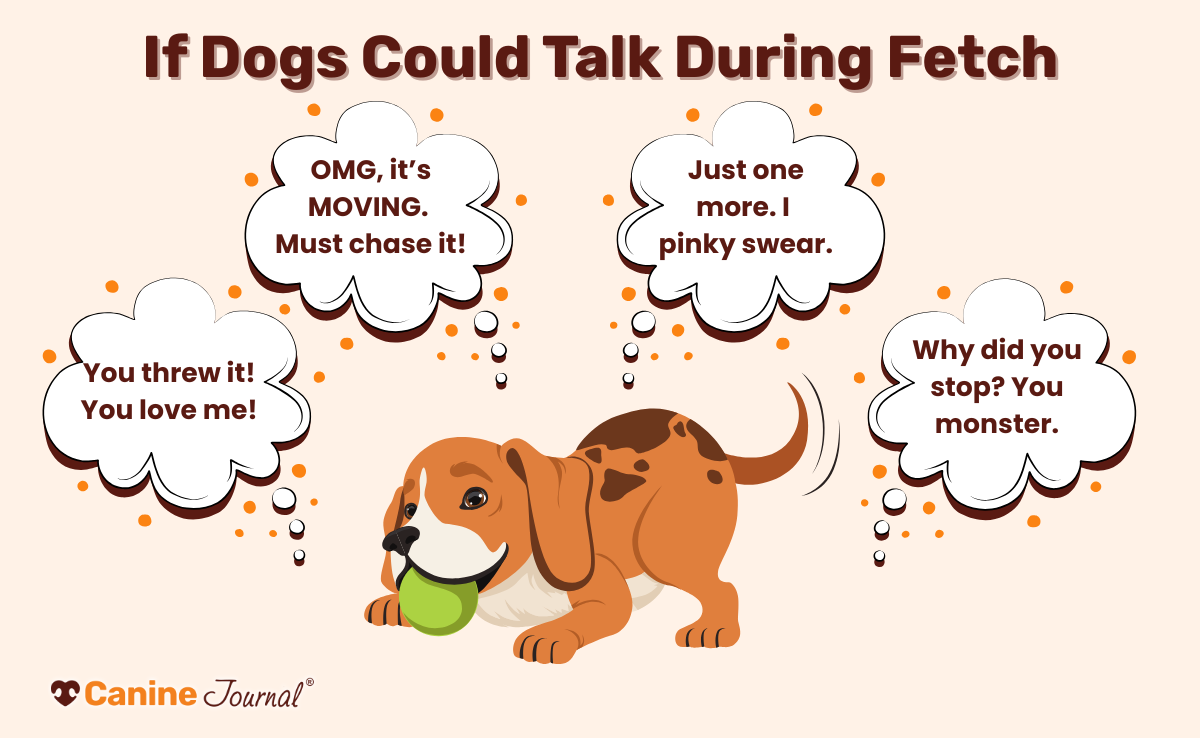
Dogs And Tennis Balls: Mental Stimulation On A Budget
In addition to the human-dog bond and fun factor, tennis balls are mentally enriching. Sure, chasing is fun. But your dog isn’t just sprinting around for laughs. Tennis balls engage their brain.
Dogs love puzzles, and chasing down a ball that rolls under the couch or bounces off furniture keeps their brains buzzing. Some pups even invent their own games, such as dropping the ball down the stairs or into your lap every six seconds.
These games help prevent boredom, stress, and anxiety, and curb destructive behaviors. So yeah, a slobbery ball might be gross, but it’s cheaper than a new couch.
Fun Facts
- The average dog can run at speeds of 15–20 mph. That’s why they can teleport to a ball before you even blink.
- Some dogs will develop a “preferred ball.” They’ll turn down any other substitute. Diva energy.
- Dogs use their sense of smell to identify “their” ball, even if it’s one of twenty.
Can Dogs See Tennis Balls?
Yes, but not in the same way we do. Ever wonder why your pup seems to lose sight of a red or green tennis ball mid-bounce? It’s because dogs are partially colorblind. They see mostly in muted shades of blue and yellow. So, while we see bright neon green, dogs likely see a dull yellow or blue-gray version of it.
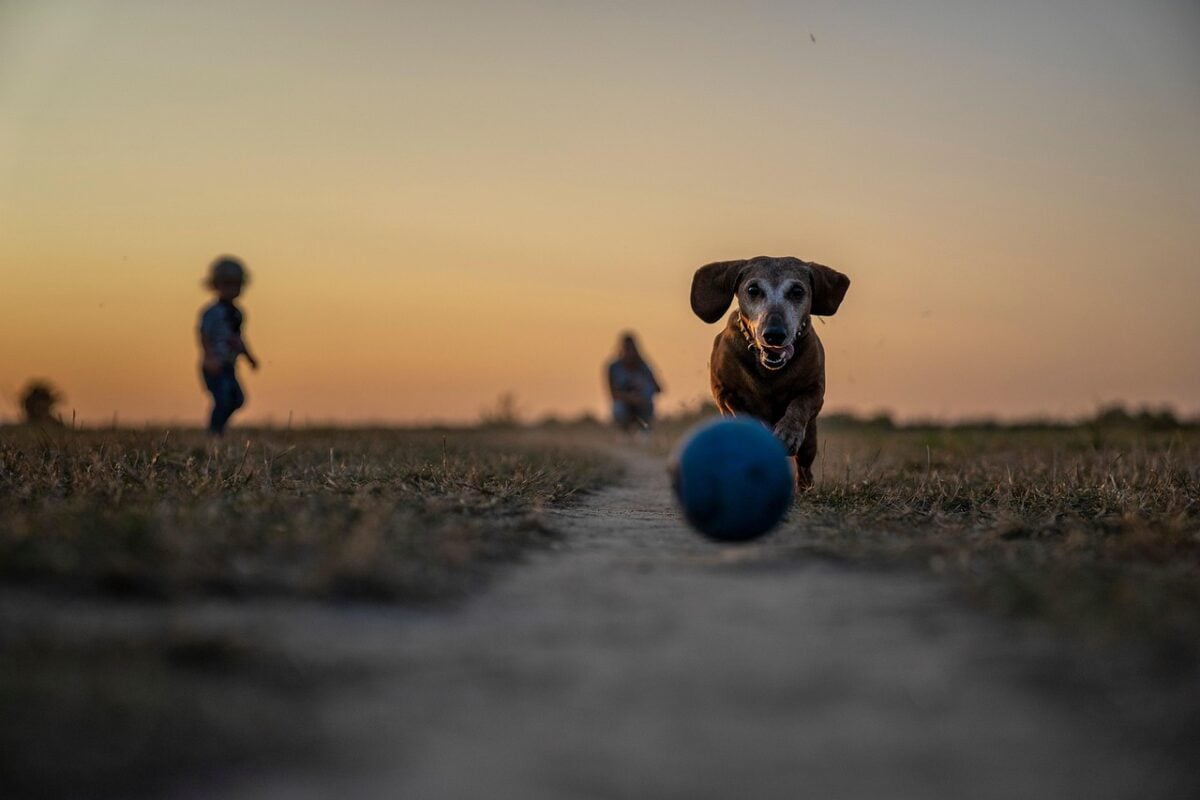
Want To Up Their Fetch Game?
Use a blue or yellow ball and avoid red or green. Many dog-safe tennis balls are often available in blue and yellow colors. They might help improve your game of fetch (especially when it’s twilight and your dog’s like, “Where did it go?!”).
Are Tennis Balls Bad For Dogs? Know The Risks
Tennis balls might be a fetch favorite, but they’re not without some hidden dangers, especially if your dog is a heavy chewer or never lets that ball leave their mouth. Here are a few health risks to keep in mind:
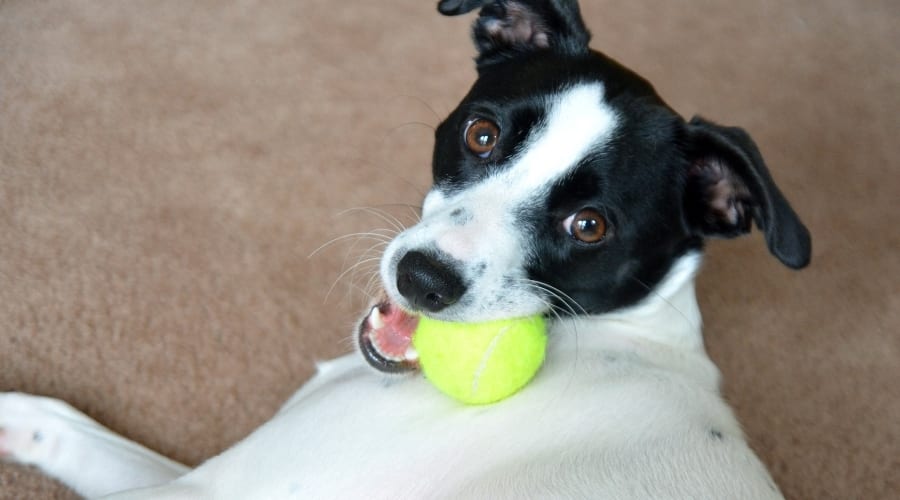
1. Tooth Wear
Unfortunately, tennis balls and dogs’ teeth aren’t a good match. The fuzzy outer layer of regular tennis balls is surprisingly abrasive. Over time, it can act like sandpaper and wear down your dog’s enamel, especially if they love to chew.
This kind of dental damage can lead to sensitivity, painful gum infections, increased risk of tooth loss, and even broken teeth. Additionally, chewing aggressively can even crack teeth in breeds with strong jaws.
2. Choking & Blockages
If your dog tears up a tennis ball (or tries to swallow it whole), pieces can become lodged in their throat or worse, their intestines. Intestinal blockages can be life-threatening and often require emergency surgery.
3. Toxic Materials
Some standard tennis balls (intended for the court, not for pets) may contain harmful glues, dyes, or fillers not meant to be chewed and ingested. Dog-specific balls are usually made with safer, non-toxic materials.
Protecting Your Pup’s Health
Tennis ball obsession is usually harmless fun, but it can also come with health risks. Dogs can swallow pieces of broken balls, leading to intestinal blockages that may require emergency surgery. And during high-speed games of fetch, some pups can take a wrong turn, slip, or collide with objects, resulting in sprains, broken bones, or worse.
That’s where pet insurance can be a lifesaver. It helps cover unexpected accidents, injuries, surgeries (and unforeseen illnesses) so you’re not stuck with as massive a vet bill when playtime — or your pup’s health — goes wrong.
Want A Safer Fetch? Try These Alternatives
Skip the cheap balls from the dollar bin and tennis balls meant for the sport. Your dog deserves better. Here are some safer balls made just for our pups. Dog-friendly balls give you more extended playtime and can help protect your pup’s teeth.
- Chuckit! Ultra Ball – Bouncy, tough, and easy to clean. You can even get a Chuckit! Ball Launcher to make it easier on your arm to launch balls.
- KONG SqueakAir Balls – Squeaky and non-abrasive (and yellow-colored to boot).
- West Paw Zogoflex Jive Ball – Durable, floatable, and dishwasher-safe.
- Goughnuts Virtually Indestructible Ball – For big dogs with strong chompers.
If your pup is an Olympic-level chewer, check out our reviews of the best indestructible dog toys for the most aggressive chewers.
4 Tips To Keep Fetch Safe
Fetch is fantastic, but safety always comes first. A little supervision goes a long way toward preventing accidents (and expensive vet bills). These tips also apply to other toys.
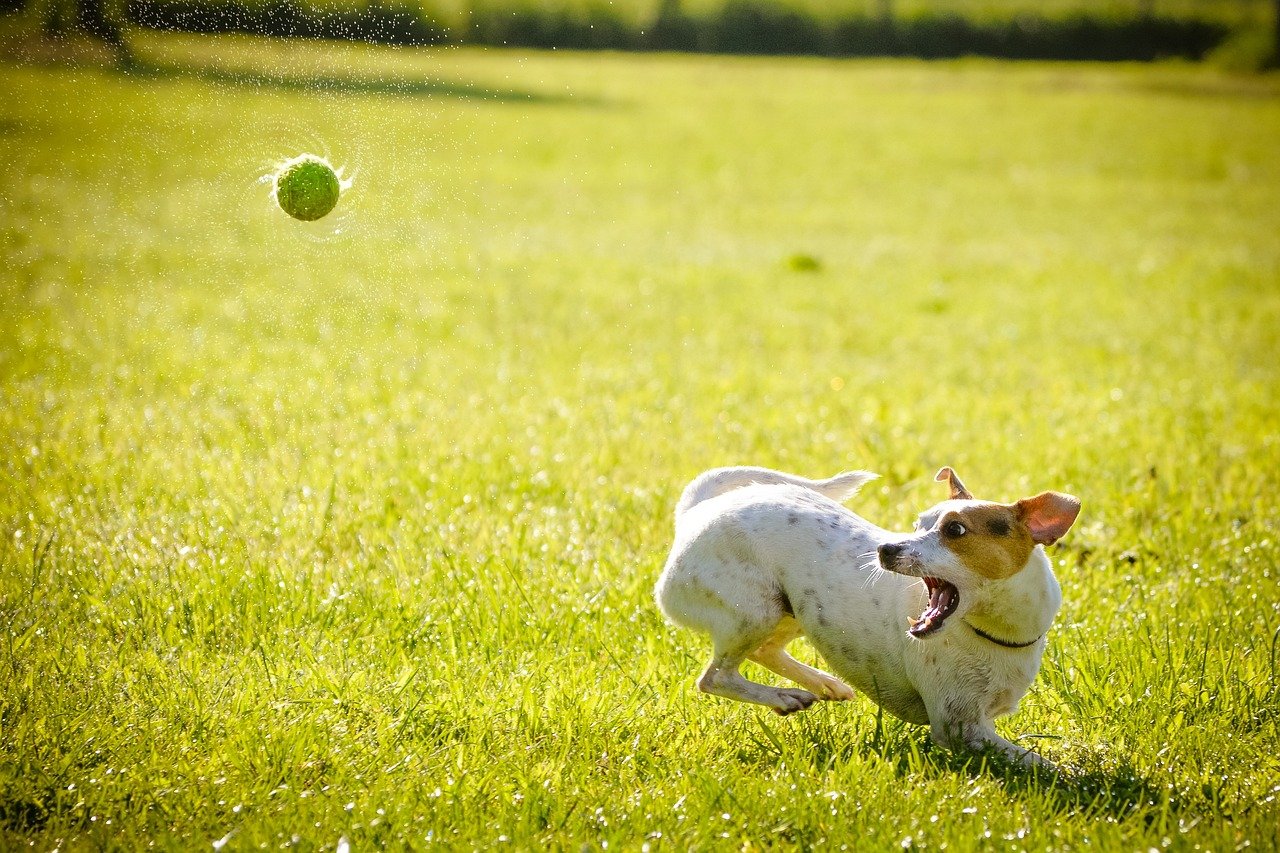
Here’s how to keep ball time safe and fun:
1. Supervise Play
Always keep an eye on your dog during fetch. Don’t just toss the ball and walk away. Once playtime’s over, put the ball away, especially if your dog tends to shred toys in secret.
2. Pick The Right Size
Ensure the ball is the right size for your dog’s mouth. Too small? Choking hazard. Too big? They might not want to play at all. A good fetch ball should be easy to carry but not easy to swallow.
3. Retire Damaged Balls
If the ball looks like it’s ready to split open, toss it. A torn cover or punctures are your cue to replace it.
4. Teach “Drop It”
Training your dog to release the ball on command can be a lifesaver. If they’re chewing on a damaged ball or refusing to let go, a solid “drop it” can keep things from turning dangerous.
Breeds Who Take Their Ball Game Seriously

While most dogs enjoy the chase, some are obsessed with it. These dogs don’t just like tennis balls; they live for them. Some of the top tennis ball junkies include:
- Labrador Retrievers – Will fetch until your arm gives out
- Golden Retrievers – Will hold a ball even while eating
- Border Collies – One word: relentless
- Jack Russell Terriers – Ball is life
- German Shepherds – Precision fetchers with military discipline
- Australian Shepherds – Will herd you toward the nearest tennis court
Even couch-potato breeds can surprise you with a hidden love for fetch. You never know until you toss. Even a lazy Pug might surprise you with a sudden burst of zoomies when they see that yellow fuzzy ball.
Frequently Asked Questions
Here are some questions pup owners often ask about dogs and tennis balls. If you don’t see yours here, ask us in our comments!
Why Does My Dog Love One Specific Ball And Ignore The Rest?
It’s usually a matter of scent, texture, and personal preference. Dogs remember which tennis ball smells like you or them and might favor it because it feels familiar, like a comfort object.
Why Is My Dog’s Ball Always Gross?
There is no such thing as a dry tennis ball if you own a dog. They drool on it, roll it in mud, and drop it in their water bowl for fun. Dogs mark their treasured objects in many ways — and soaking a tennis ball in drool is one of them.
Once it smells and tastes like them, it becomes their prized possession. They’ll carry it to bed or place it lovingly in your lap like a sacred gift. Just accept it. You’re family now.
My Dog Shredded A Tennis Ball. Should I Be Worried?
If your dog eats parts of the ball, call your vet. Ingested tennis ball fuzz or rubber can lead to intestinal blockages. Always supervise play and replace worn-out or damaged balls to keep your pup safe and secure.
Beyond Balls: Other Great Toys Dogs Love
Toys provide our pups with mental enrichment and physical exercise, keeping them happy and healthy. If your pup is obsessed with toys, check out our reviews of the best interactive dog toys, including puzzles, self-moving toys, automatic ball launchers, and more.
Does your furry friend have an obsession with tennis balls or balls in general? We’d love to hear any funny stories about your dog’s fetch prowess, so please share in our comments!
